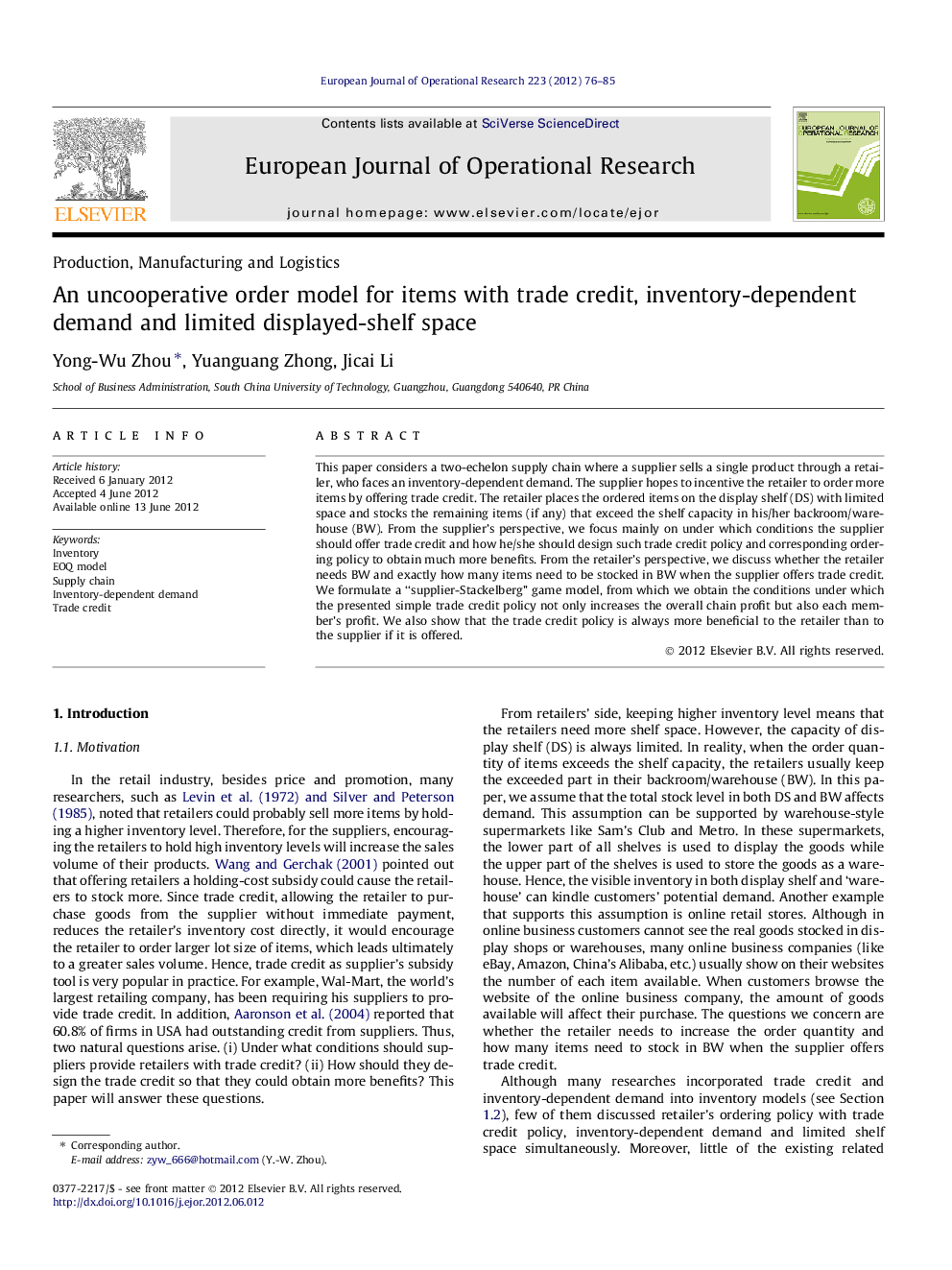| Article ID | Journal | Published Year | Pages | File Type |
|---|---|---|---|---|
| 478347 | European Journal of Operational Research | 2012 | 10 Pages |
This paper considers a two-echelon supply chain where a supplier sells a single product through a retailer, who faces an inventory-dependent demand. The supplier hopes to incentive the retailer to order more items by offering trade credit. The retailer places the ordered items on the display shelf (DS) with limited space and stocks the remaining items (if any) that exceed the shelf capacity in his/her backroom/warehouse (BW). From the supplier’s perspective, we focus mainly on under which conditions the supplier should offer trade credit and how he/she should design such trade credit policy and corresponding ordering policy to obtain much more benefits. From the retailer’s perspective, we discuss whether the retailer needs BW and exactly how many items need to be stocked in BW when the supplier offers trade credit. We formulate a “supplier-Stackelberg” game model, from which we obtain the conditions under which the presented simple trade credit policy not only increases the overall chain profit but also each member’s profit. We also show that the trade credit policy is always more beneficial to the retailer than to the supplier if it is offered.
► Build a two-tier order model for items with stock-dependent demand, limited shelf space. ► Given trade credit policy, present conditions of judging if the retailer needs BW. ► Propose the method of determining how many items should be stocked in BW. ► Show the specific conditions under which the supplier should offer trade credit. ► Discuss how the supplier design trade credit policy to obtain much more benefits.
